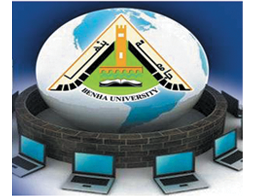The Effect Of Using Pesticides On Foreign Trade Of Egyptian Vegetables:
|
|
Author | |||||
|
MSc
|
Type | |||||
|
Benha University
|
University | |||||
|
|
Faculty | |||||
|
2005
|
Publish Year | |||||
|
At the lest thirteen years of the last century, pesticidestecumo tho main method of pest control. The moun percentages ofJ11:~1.(i 10:30 JlE!!!rrly, by pests in case of wheat trice t maize, vegetable s, f::::uitsand cotton were 39, 33, 37, 22, 24 and 33%, respect1vel”y.The price of pesticides used per year is more. than 100l:~i].l;Lon dolar. Egypt imports several hundreds metric tons ofr11 Er~:l(~:::’deseach year, bei.ng 2143 tons in 1952/1953 and Lncr-eafit;t[ to 35259 tons in 1972 and decreased to 18778 tons in 1982.About 70% of these quantities is used to control cotton pests,(I~g~~ptcultivates about 1.2 million feddan of cotton )aceordingtc its economic importan.ce as a strategic crop.The percentage of losSes in the main crops in Egypt isabout 60 million Egyptian pound per year • About one half ofthese losses is due to the infestation of cotton with cotton:Leaf’ worms and bollworms •The main almof this thesis is to study the side effectsof pesticides, how to solve this probleme and the economic use.of these pesticides to determine the best method of their controlto attain the highest benifit for the Egyptian Farmer.Methods of pest oontrol :I - The natural control :The natural factors that affect the natural balaace betweenthe environment and the pests, i.e. the atmospheric factors( temperature, relative humidity, Wind, atmosphoric pressure,light, y.ain••• etc), the biological enemies (parasites, predaceousinsects and i~ected microorganisms), topographicfactors (deserts, mountains, sees, oceans, soil types).2 - The applied control : The man plays a director role for this method of control.lIe uses all the available methods of control as follows :-A) Manual and mechanical control •b) Legally methods : i.e. stopping berseem irrigation after10 may in Egypt and treating the cotton seeds with hightemperature to kill the pink bollworms •c) Biological control: By increasing the predaeeous,theparasitic enemies of the pest in the environment byrearing or importing these enemies (i.e. bacteria, rungi)’protozoa, virus;;.parasitic and predaceous insects, birds,fishe s ••• et·C )d) Chemical control : - By using Insecticides, herbicidese~d fungicides. These pesticides are inorganic or organiccompounds. The 1norgandc compounds are arsenic, sulphurend florina compounds ••• etc) • The Organic compoundscan be divided into several groups, : organochlorine pesticides,organoposphorous pesticides. nitrophenols. carab~Bte pesticides, pyrethroids, and organic pesticidesfrom plant sources. These pesticides can be used as suspensionsor emulsions or true solutions. These formulationsoan be used by several types of sprayers, 1.e. Aeroplaneer motors.Pesticides assess in F:xpt IThis part concerned with the development of pesticide uses.for pest control in Egypt in the period from 1952/1953 to 1981/1982.It indicated that the quantit7 of pesticides used increased in the’~riod f’rGm 1952/1953 to 1911/1972 and decreased in the period from;1972/1973 to 198111982 • Results also indicated that the mean decrease/year in the use of p.-ticides in the period from 1969 to1980 is 6.05% • This decrease is highly significant to the level0.01. While the percentage of inc~aase in fungicides uses was 7.98%at the same period and this increase was significant at the level·0.05 • There was also a yearly increase in herbicides use. Thisin.ctrease was 17 .83~ being highly significant to the level 0.01hestatistica.l study of the time series of the realpricen per ton of pesticides during the period (1970 - 1980)s110wed that the average increase of the price per tonI’f:a-chEl~l L•.E. 38.469, vlith an annual increase of about 5.4%,rtthin this period •~~hedemand function of pesticides use for pest controlLn Egypt was estimated during the period{I970 - 1980). Annualf1uct’~mtions of quantity demanded could be explained by thenonnequanf variability of real prices per tcno and timo fllCtor.Coefficient of determination (R2) was 0.098. Price elasi;ici1;~r &r’Jl.nual demand for pesticides was about(O.056).D:!topp:lng time factor, and re-estimate this c,emand functionalso revealed that the coefficient of determination (R2) was(0.018) and price elasticity was (O.098).~his means that notonly prices were the determinant factor of quantity demandedmlt also area cultivated of different crops and the degree ofinfestation. It is expected that the quantity consumed of pesticidesin Egypt Will reach I7173, 13957,10142,6326 tons in 1985,1990,1995 and 2000, respec·~ively.The S~le of study was taken from one village (Batta) in - -Banha district and the number of 1nd1v1duals(4J).were taken tromall five olass !Lrea of holders,which were cultivated bY’ oott ••for tw. seasons(I977 and 1980) ~With regard to the economic stud~ of the different methodsof spray1Dg pesticides to cotton cultivatlC?n aeroplanes and 1011’or high volume sprayers, the study indioated that the revenueper teddan of using aeroplane in the second deg~ee at s011 ferti11~was the highest one followed by first degree by using motor sprayers,thi~ d8~e with motor sprayers, third degree withaeroplane first degree with aeroplane and Becod degree by usmoter .sprayers, respectively, in the sample of study inkalubia Governorate c) Fruits, vegEite.bles and other field crops.d) Meat, milk, eggs and fat.e) Air. f) Water. g) Human health.2 Indirect side effocts :A) Appearance of Secondary pests •b) Effect of natural enemies and pollinators and honeybees.c) Appearance of resistant strains of the pests. for the economic use of 28sticides : I - The use of ovicides to decrease the price of collectingegg masses 2 - The use of parasitic and predaceous insecta to controlposts : heuse of remote sensing technique to determine theinfested areas 4 - Decr-ea.af ng the use of pesticides by using the sex attractants, repellents, antifeedants, sterilizing materials,hormones, and biological control |
Abstract | |||||
|
| .
Attachments |








